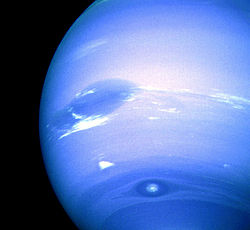

The Small Dark Spot, sometimes also called Dark Spot 2 or The Wizard's Eye, was an extraterrestrial vortex on the planet Neptune. [1] [2] It was the second largest southern cyclonic storm on the planet in 1989, when Voyager 2 flew by the planet. When the Hubble Space Telescope observed Neptune in 1994, the storm had disappeared. [3]
